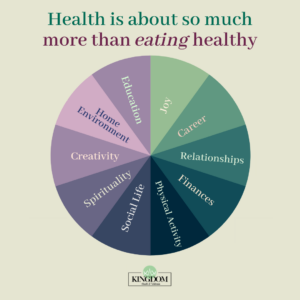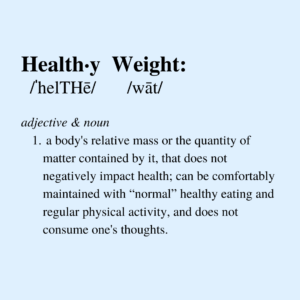Empower yourself and the women in your life with these top 10 ways we can support breast health.
10 Tips for Breast Health from our provider Taylor:
 1. Regular self-breast exams
1. Regular self-breast exams
See our last post for a how-to picture or ask your doctor/mom/trusted friend to teach you!
 2. Diet
2. Diet
Whole, real foods. Avoid grains, sugars and vegetable oils. Get food sensitivity testing done if needed!
This focus becomes so important because breast cancer has increased dramatically over the past few decades.
Whereas one in 20 women had it in the 1960s, today that number has risen to one in eight women. According to The American Cancer Society, over 40,000 women will die from breast cancer in 2025.
These and other statistics suggest environmental factors are driving cancer. What we eat, toxins, chronic stress, sleep deprivation, and other problems in modern-day society become catalysts to increase breast cancer risk.
Through Functional Medicine, we consider the factors that increase breast cancer risk and then eliminates them. From that perspective, we can literally change the soil in which cancer grows.
According to Dr. Hyman, imbalances in seven key systems in your body contribute to breast cancer and every other disease. Among these seven key systems include hormonal imbalances such as high insulin levels that eventually create insulin resistance.
Sugar, along with refined grains, becomes the driver behind high insulin levels. Every time we eat sugar, we raise insulin levels, which make cancer cells grow and promote inflammation – which is made worse with processed vegetable oils. It’s literally like adding fuel to the fire.
High insulin levels also increase estrogen levels. High estrogen levels correlate with increased breast cancer risk.
Sugar, especially as high-fructose corn syrup and other processed carbohydrates, surges our insulin levels, increasing estrogen in the bargain.
Put bluntly: Every time we eat sugar, we increase our risk for breast cancer.
Increased insulin also means our body becomes really good at storing fat, and a vicious cycle ensues as our insulin and estrogen levels stay cranked up. Studies show excess body fat increases our risk for breast cancer.
When someone is deprived of sugar and then injected with radioactive sugar, that sugar goes right to cancer cells, which triggers insulin, inflammation, all while feeding the cancer cells. Cancer cells love sugar.
To become proactive and prevent or reverse breast cancer, you absolutely want to eliminate sugar. For breast cancer patients, we recommend going cold turkey on sugar and processed foods.
 3. Avoid estrogen mimicking chemicals
3. Avoid estrogen mimicking chemicals
These are found in beauty products, processed canned foods, plastics, commercial soy products, birth control pills, and unfiltered water.
Diet plays a major role in breast cancer, but so do other factors like environmental toxins. The most damaging ones include estrogen and substances that mimic it, which we call xenoestrogens.
Xenoestrogens bind to estrogen receptors that activate estrogen, stimulating cancer pathways. In fact, these estrogen mimickers are 1,000 times more powerful than estrogen, and they react synergistically.
To lessen our exposure to these toxins, choose filtered water and organic food; Always opt for high-quality meat sources like wild salmon and grass-fed beef; Become more aware about how things like household cleaners and cosmetics can increase your toxic load at the EWG.
 4. Supplement with antioxidants
4. Supplement with antioxidants
such as black seed oil and black cumin!
The amount of healing properties provided by life on this earth will never cease to amaze us! Plants such as herbs, roots, fruits and vegetables are packed with micronutrients, phytonutrients, and essential minerals to aid and repair our bodies.
Antioxidants are plant or phyto-chemicals that protect your cells and tissues from damage caused by electrically charged molecules, a.k.a. free radicals. Cell and DNA damage is at the root of most diseases – including: autoimmune disease, cancer, and chronic inflammation. Antioxidants act like natural sponges, mopping up these free radicals to protect your cells and DNA from damage. This is why it is so vitally important to get as many antioxidants into your body as you can.
Antioxidants can be found in fruits and vegetables as well as herbs. You can ensure you’re getting these cancer preventing photo-chemicals in supplements – our provider Taylor recommends Black Seed Oil or Black Cumin! Talk to us about which brands we love and trust to ensure you are getting a high-quality supplement to aid your body!
5. Ditch commercial deodorants
that contain aluminum, parabens, & estrogen mimicking chemicals which increase your risk of breast cancer.
We want to avoid any deodorants with toxins such as aluminum, p-dichlorobenzene, and/or phthalates. We can’t recommend any certain brands – you can also make your own as it is the most effective and affordable. This also ensureds knowing that there are no hidden ingredients and our skin is being protected from toxins.
 6. Undergarments
6. Undergarments
underwire and snuggly bras restrict circulation and lymph flow. Opt for a bralette or wire-free option.
Aside from helping us look good and giving us support, how many of us have thought about how bra wearing affects our breast health? The fact is women of all breast sizes who wear bras, especially for extended periods of time and especially bras with underwires, are negatively impacting breast health.
Bra wearing confines and constricts the breasts, reducing lymphatic drainage. It is very important to have optimal lymphatic drainage to remove the toxins from the breasts that contribute to breast congestion and inflammation. Estrogen is produced in the breasts and fat cells and if the lymph system is clogged, the breast environment becomes stagnant and unhealthy, leading us down a path none of us want to go down.
According to the book Dressed to Kill: The Link Between Bras and Breast Cancer, women who wear bras more than 12 hours a day have a 1 out of 7 risk of developing breast cancer. While women who wear bras less than 12 hours a day have a 1 out of 52 risk, and women who never wear bras have a 1 out of 162 risk.
Over 85 percent of the lymph fluid flowing from the breast drains to the armpit lymph nodes (also why it’s not helpful to block this detox pathway with antiperspirants). Most of the rest drains to the nodes along the breastbone. Bras and other external tight clothing can impede flow. The nature of the bra, the tightness, and the length of time worn, will all influence the degree of blockage of lymphatic drainage. Thus, wearing a bra can contribute to the development of breast cancer as a result of cutting off lymphatic drainage, so that toxic chemicals are trapped in the breast.
Does this mean we should stop wearing bras? Not necessarily. If you do choose to wear a bra, avoid bras with underwires and make sure you get a proper fit! This makes a HUGE difference in circulation and lymph function.
 7. Avoid medications that impact hormone levels
7. Avoid medications that impact hormone levels
such as HRT (synthetic hormone replacement therapy) or birth control pills. There are other alternatives out there such as cycle mapping! If you use birth control as a method of hormone balance consider a bioidentical option such as BioTE.
Conventional treatments for hormonal imbalances typically include synthetic hormone replacement therapies, birth control pills, insulin injections, thyroid medications and more. Unfortunately, for the majority of people suffering from hormonal disorders, relying on these types of synthetic treatments often does three things:
- It makes people dependent on taking prescription drugs for the rest of their lives in order to keep symptoms under control.
- It simply masks the patient’s symptoms, but doesn’t solve them, which means that the patient can continue to develop abnormalities in other areas of the body while the disorder progresses.
- It potentially causes a higher risk for serious side effects, such as stroke, osteoporosis, anxiety, reproductive problems, cancer and more.
Is it possible to balance hormones naturally? The good news is: yes, in many cases it is. At our office, we address root causes of hormonal problems, as well as provide treatment options to help you balance your hormones naturally.
 8. Exercise
8. Exercise
daily movement increases circulation and lymph flow. Rebounding!
Regular, moderate exercise supports cellular health and the cellular process of autophagy, which is the recycle and cleanup of old or damaged cells. We CAN NOT recommend daily movement enough! Go for a walk, garden, turn up your favorite music and have a dance party while you clean… just move your body!
A new study adds to existing evidence linking physical activity with longer survival in women diagnosed with high-risk breast cancer.
Women who engaged in regular physical activity before their cancer diagnosis and after treatment were less likely to have their cancer come back (recur) or to die compared with those who were inactive, the study found.
Studies show regular exercise can decrease your breast cancer risk. Exercise improves insulin sensitivity, helping you balance estrogen and maintain a healthy body weight.
Just like in nature, where there is stagnation – there is disease.
Be sure to move everyday!
 9. Decrease & manage stress
9. Decrease & manage stress
we recommend certain adaptogens, prayer/meditation, and other creative, calming outlets.
Studies connect chronic stress levels with increased breast cancer risk. Whether you opt for meditation, stretching, deep breathing, walking barefoot in the grass, or another de-stressor, find something that works for you and do it.
 10. Quality sleep and good sleep hygiene
10. Quality sleep and good sleep hygiene
effects the body’s ability to repair itself and fight off disease!
Studies show an inverse association between sleep duration and breast cancer risk. Listen to your body or aim for eight hours of quality, uninterrupted sleep every night.
Find our top sleep hygiene tips here!
When it comes to cancer – and really, optimal health – we’re all in this together. We can all learn from each other. If you’ve found ways to reduce your breast cancer risk, we want to hear from you. We would love to hear your thoughts below or on our Facebook page.


 Don’t Weight! A Better Approach to Healthy Weight
Don’t Weight! A Better Approach to Healthy Weight

